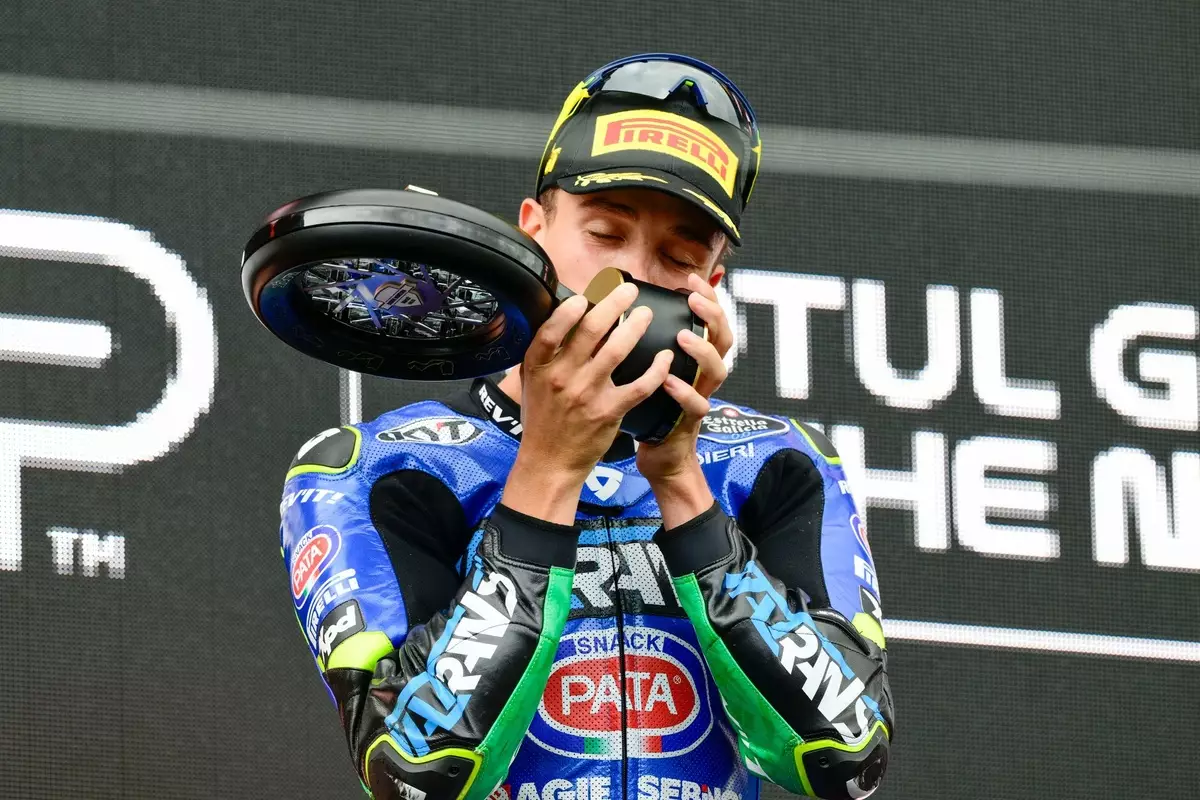Diogo Moreira’s recent triumph at Assen is not just a personal milestone but a clarion call for the broader MotoGP landscape. Achieving his first Moto2 victory by starting from pole position and consolidating his lead demonstrates more than just raw speed; it symbolizes a potential paradigm shift in the sport’s emerging talent pipeline. Moreira’s victory underscores the importance of perseverance, evolving racecraft, and strategic growth—elements that translate into a promising future at the pinnacle of motorcycle racing. His win embodies the surge of hope that a young rider, backed by solid results and a clear trajectory, can break into the elite class and make an immediate impact.
What makes this achievement outstanding is its timing—coming after a challenging start to the season, where indecision and hesitation hampered his early races. Now, with three podiums in four races and accumulating more points than many of his peers, Moreira has demonstrated a resilience that transcends mere speed. It is this resilience, coupled with his recent growth, that positions him as a serious contender for a spot in MotoGP, a class often criticized for favoring established riders over emerging talent.
The Strategic Importance of National Identity and Sponsorship
In the world of MotoGP, nationality often plays a pivotal role—not just in terms of representation but also in marketing and sponsorship dynamics. Moreira, as a young Brazilian rider, brings a fresh wave of enthusiasm to a country that is eager to reassert its presence on the world stage. His victory makes him a trailblazer—the first Brazilian to win a Moto2 race—injecting national pride into the sport’s narratives. Such achievements can catalyze increased interest from sponsors, fans, and manufacturers eager to expand into emerging markets.
Yamaha’s recent partnership with Moreira exemplifies this strategic move. A test on the Yamaha R1 at Balaton indicates serious interest from the Japanese manufacturer, aligning with Yamaha Brazil’s ambitions to strengthen its presence in South America. The alignment of interests shows Yamaha’s recognition of Moreira’s potential, not only as a rider but also as a regional ambassador. This kind of backing is critical in a sport where financial stability and brand association often determine career trajectories.
This intersection of national pride, sponsorship, and strategic partnerships significantly enhances Moreira’s future prospects. It hints at a scenario where he is not just a talented rider but also an asset to manufacturers looking to capitalize on emerging markets. His rising profile and Yamaha’s investments create a synergy that could very well accelerate his transition into MotoGP.
The Complex Pedigree of Possible Moves and Contractual Intricacies
While Moreira’s performances suggest a promising path to MotoGP, the journey remains fraught with contractual negotiations and team politics. The anticipated move to Pramac Yamaha—potentially alongside Toprak Razgatlioglu—would be a strategic pairing, blending youth with experience and amplifying Yamaha’s ambitions. However, this scenario hinges on the current rider lineup and contractual clauses involving Mikel Oliveira and Jack Miller.
Oliveira’s case illustrates the fragile nature of MotoGP contracts, where injury history and performance clauses can make or break a rider’s future. His current situation, marked by injuries and the team’s performance clause, could lead to release if certain standing conditions aren’t met. Meanwhile, Jack Miller’s pursuit of a contract extension adds another layer of complexity, illustrating how team decisions are often influenced by performance metrics and contractual clauses rather than talent alone.
In this multifaceted chess game, Moreira’s recent partnership with Yamaha Brazil signals a strategic step, positioning him well for future opportunities. The possibility of riding for manufacturers like Honda or Aprilia also hangs in the balance, each with its own set of negotiations and internal dynamics. The fact that Moreira opted out of a test with Aprilia at Aragon’s post-race test suggests he is more selectively weighing his options, prioritizing stability and clarity over potential offers.
The Future of Moreira’s Career: A Balancing Act Between Talent and Timing
Ultimately, Moreira’s ascent underscores a broader truth about MotoGP: timing and environment are just as crucial as talent. While his results and backing indicate a clear upward trajectory, the sport’s political and contractual intricacies can either accelerate or delay his climb. A year of seasoning in a well-structured team with a clear pathway to MotoGP might serve him better than jumping prematurely into a factory team environment where he risks being overshadowed.
Despite this, Moreira seems comfortable with the idea of staying loyal to his current team longer if needed, emphasizing his desire for stability and growth before making the leap. Such maturity in decision-making indicates he understands the importance of readiness—both physically and mentally—for the leap into the premier class. This pragmatic approach could ultimately prove more beneficial in establishing a lasting presence at the top.


Leave a Reply